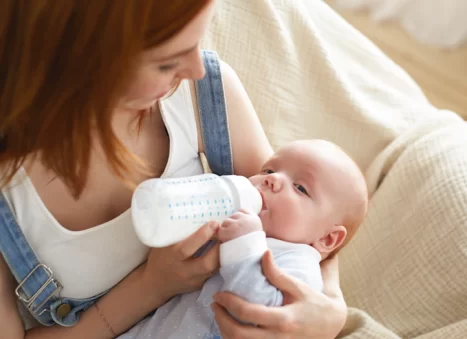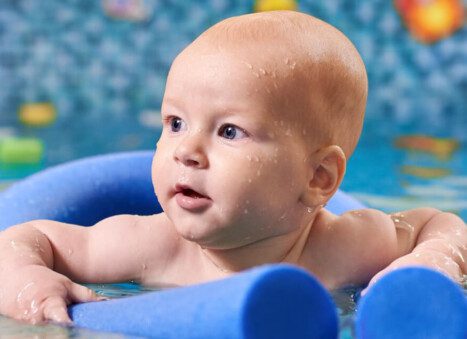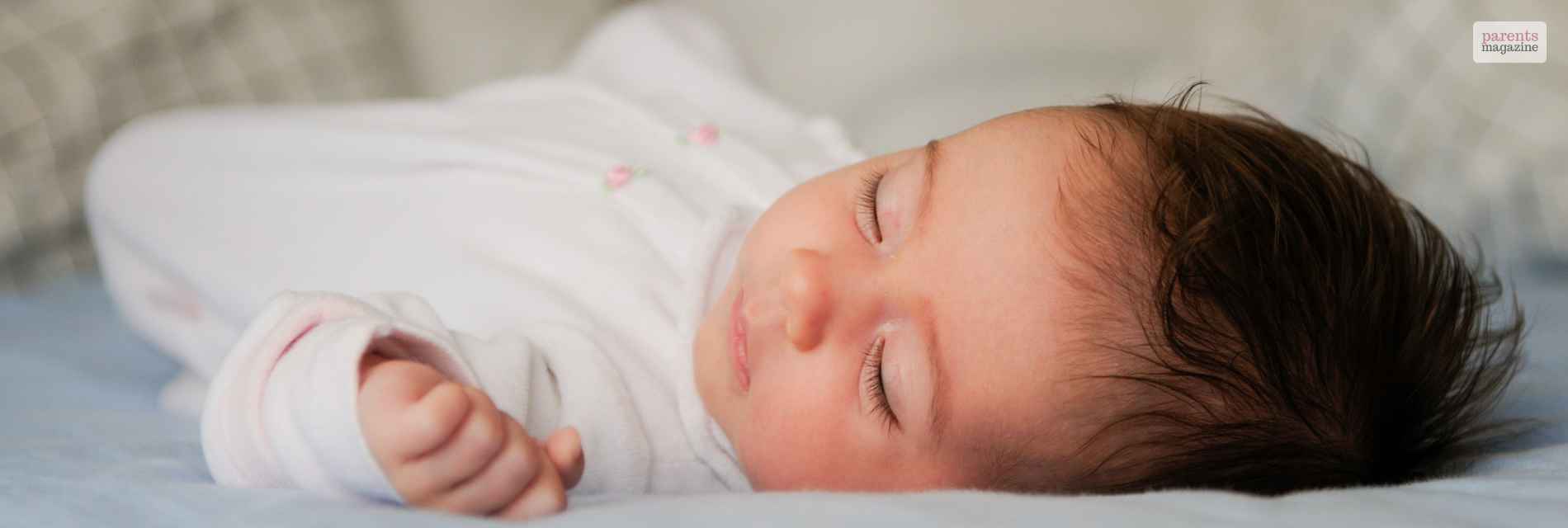
Your Newborn Rolls To Side While Sleeping- What To Do?
You are afraid that you laid your baby to sleep on its back, but it will roll over. Squirming in their sleep, they will manage to roll, and what if they get hurt? There are few things as minimally worrying as when newborn rolls to side while sleeping. But we get it. You know it is not a big issue to worry about, but you have been blessed with a mother’s heart. And now all your worries and questions are valid.
Sometimes your baby may not like to sleep unless they are put on their side. Your bundle of joy has brought a bundle of worries. Add to that the warnings about SIDS and safe sleeping positions are making you even more anxious.
First of all, relax. Take a deep breath. You are doing great as a mother, and you are allowed to take your eyes off of the baby monitor sometimes. Your baby may not be the most serene back sleeper or isn’t a saint when asleep – and that is okay.
What Happens When Your Newborn Sleeps On Their Side?
Although it is true that sleeping on their back is the best, that does not negate the fact that sleeping on their sides is also safe as they grow and get stronger. Your baby will become more and more active in their sleep as they reach their first year. By then, all your worries about side sleeping also vanish.
Here we will talk about the few risk factors of your newborn sleeping on their side. Although you may rest easy, as these risks do pass with age, and in no time, you and your baby can sleep worry-free.
Most Serious Risk: SIDS
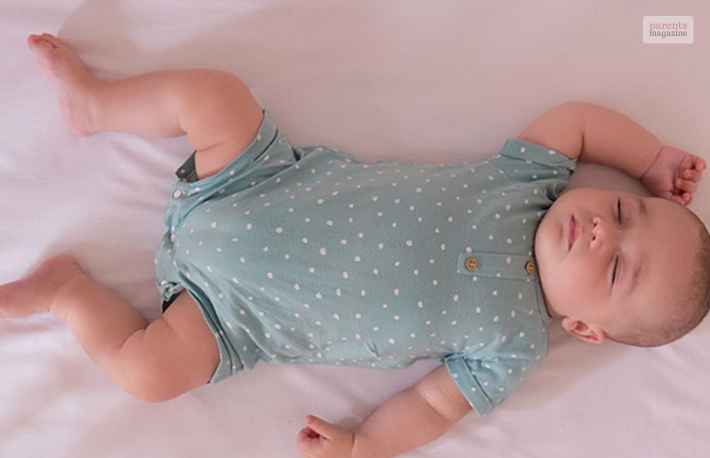
We will try and get the toughest one out of our way in the beginning. It is safer to put your baby to sleep on their back instead of their tummy. Stomach sleeping is known to increase the chances of sudden infant death syndrome as well as suffocation, which is as easy as the maneuver of rolling over from the side to the stomach.
SIDS is one of the leading causes of death in babies aged 1 month to 1-year-old. In the US, around 3,500 babies pass suddenly in their sleep every year.
Sleeping on their belly isn’t the only factor either. Certain other things affect them when the newborn rolls to side while sleeping:
- Premature birth
- Baby being put to sleep on the sofa, couch, or in a car seat
- Bottle-feeding the baby instead of breast-feeding
- Sleeping in the same bed as the parents
- The mother of the baby smokes during pregnancy or around the baby, causing secondhand smoking
- Parents drink alcohol or have drug abuse problems
- Having blankets or toys in the crib or bassinet where the baby is kept
The Safest Place For Your Baby
Many of the factors mentioned above may not be under your control, and it could happen to anyone. There are instances of premature babies that thrive despite their circumstances, and any baby that’s fed is a healthy baby and has been taken care of, regardless of bottle or breastfeeding.
And yet many of these factors are in your control. The safest place for your baby to be is in your bedroom but in a separate crib.
Once you have made sure that they are lying on their back, you may opt for swaddling. It is preferred as it imitates the safety of the baby as it were in the womb. But if your baby learns to roll over, their arms will need to be free to avoid suffocation if they were to roll over onto their tummy.
Sleeping on their sides isn’t as big a problem as it facilitates their rolling over on their belly. Accidentally rolling is also possible, even if they haven’t learned this new skill yet.
SIDS risk is the highest in infants of the age of 2-4 months, but it can happen until they reach 1 year of age.
What If They Choke?

Your newborn rolls to side while sleeping, and side sleeping is known to prevent choking. You may think that your baby could choke if it spits up milk or vomits while asleep on its back. The National Institutes of Health has, however, debunked it and called it a myth.
NIH has said that studies have shown babies sleeping on their backs keeps them from choking as babies have natural reflexes that help them cough up or swallow their spit-up, even while they are asleep.
You have seen your baby burping up his spit-up. That’s how easy it is for babies to do that in their sleep too.
You Dont Want Your Baby To Get A Flat Head
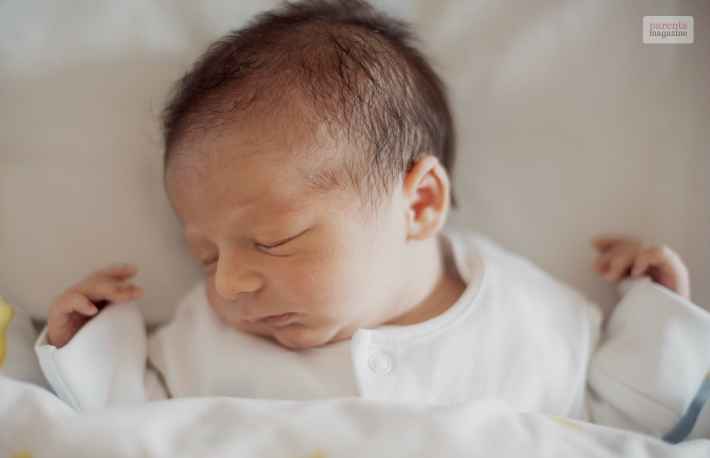
You may have heard that allowing your baby to sleep solely on their back could cause a flat or oddly shaped head, called plagiocephaly.
It is true that babies have softer skulls along with weak neck muscles in their early years. Which means stressing on any one position could cause a bit of flattening.
This is completely normal and will go away on its own. There are also quite a few ways to prevent these flat spots from happening at all.
Laying your baby on its back during nap time or sleeping can help you understand which way your baby is able to look instead of just the ceiling. Try placing a toy or something that can catch their attention outside their crib (never inside their crib in infancy).
Keep the view try changing your baby’s head position by altering the positions in the crib, more so if the crib is standing against a wall.
- Place your baby at the head of the crib, with their head against it.
- Next time try placing your baby with their head at the foot of the crib. This will make your baby want to move its head around to look at the other parts of the room.
- Keep alternating.
- Remove hanging toys overhead so that their attention can be drawn to the side and not just straight ahead.
- Check that their back is against the bed, but they are facing the room
Risk Of Torticollis
You never heard of it, but you definitely felt it. Ever woken up with a sprain on your neck because you chose a poor sleep posture? Yeah, well, that’s Torticollis. this happens to babies while they are in the womb, but it can come back even after 3 months of birth. Certain signs that you can watch out for are:
- Difficulty turning the head
- Preferring to breastfeed on one side
- Looking at things by moving their eyes instead turning their head to follow the movement
- Titling the head in one direction
Talk to your pediatrician for help if your baby shows signs of torticollis.
When Does Side Sleeping Become Safe For Your Baby
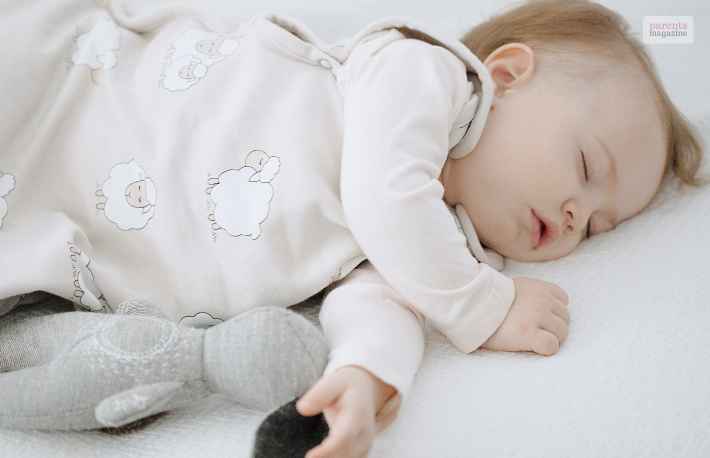
It becomes easier for your baby to roll over when you make them sleep on their side. This is not safe for at least the first 4 months of birth. But they can occasionally be made to lie on their tummy while fully supervised.
It is also highly advisable to remove any bulky things from inside the crib that could get caught between your baby and the crib. Some of them are:
- Extra pillows
- Too many clothing or layers
- Bumper pads
- Extra or heavy blankets
- Large teddy bears or stuffed toys
How To Help Your Baby
A baby has a mind of their own, but to prevent them from sleeping on their side before it is safe for them you can try a few things.
- Use a firm surface – Take note that your baby’s bassinet, playpen or crib has a firm mattress, meaning your baby should not be allowed to leave an imprint. Avoid putting them on soft mattresses which will allow them to sink in the mattress, which will help them to roll easily to their sides.
- Use a baby monitor – Well, do not just get any monitor, get one that will let you see directly from the baby’s room. This will let you know when your baby is on the go.
- Swaddle them until they learn to roll over– Wrapping up the baby like a burrito might help them sleep on their back more comfortably. But keep in mind that the swaddle should not be overly tight, there should always be room for the baby to make hip movements. Knowing when to stop is essential. If your baby has figured out how to roll over then it is time to stop swaddling.
- Try some sleeping sacks – There are babies who do not like being swaddled. For them it is best to use a sleeping sack. This is an intermediate step that could be helpful. These look like small sleeping bags in which you put your baby to sleep. There are arm-free sleeping versions as well for babies who have learned how to roll over. But in general sleeping sacks help a baby to stay asleep for a longer period of time.
Things To Avoid In A Crib
Your baby’s crib should only contain a firm mattress and a fitted sheet. There is no need to put a baby positioner or an extra pillow in their crib. There are some instances where a baby got suffocated because of the baby positioner while sleeping.
Along with that you should also avoid some other things in your little ones crib, like
- Extra pillows
- Bumper pads
- Bulky blankets
- Too much clothing
- Large stuffed toys
To Conclude
It is best to let your babies sleep on their backs. It has been a tried and tested sleeping position that helps prevent SIDS. Other risks of side sleeping are treatable and do not pose a big risk. And yet they are not worth risking your baby’s comfort for.
Sleeping on their side becomes safe once your baby reaches 4-6 months old, when they roll over on their tummy on their own, instead of by accident. If you do notice your baby having a tendency to roll onto their side, discuss it with your pediatrician. Their flat head will go away and you need not worry about it.
If you have thoughts to share or you are a new mom who has questions, leave a comment below. We would love to hear from you!
Additional Reading:
Already have an account?
Sign In
Create your account
User added successfully. Log in






